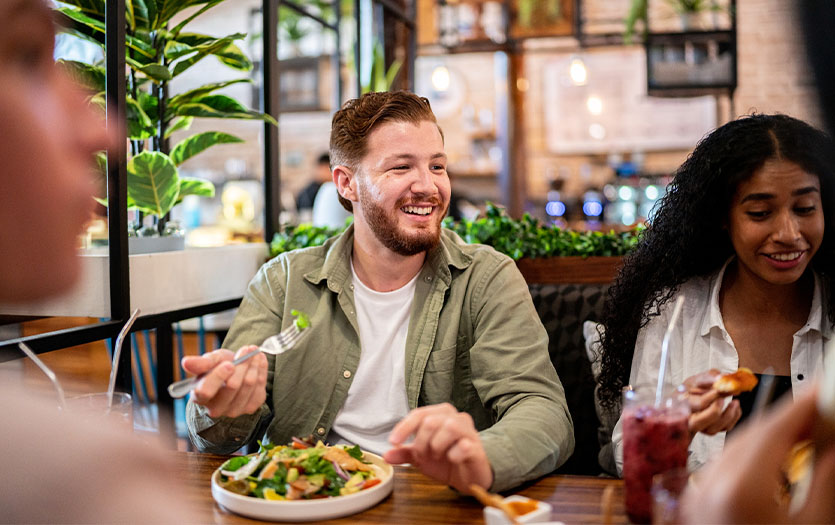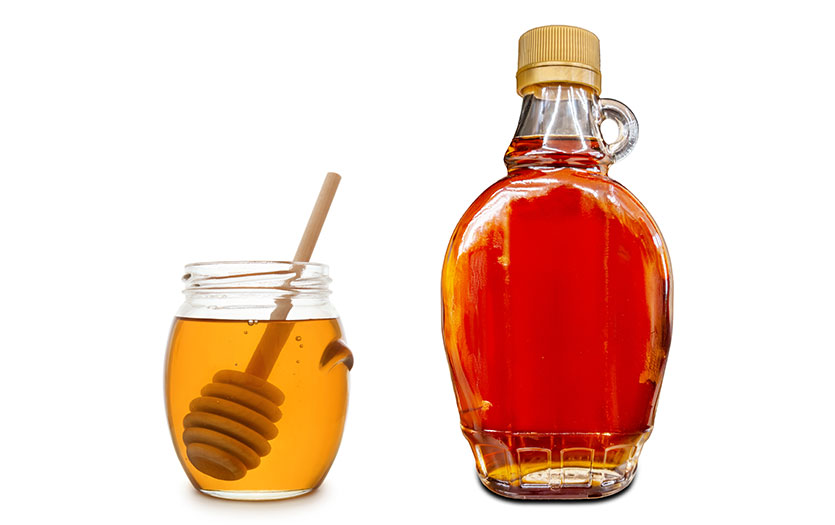
This post was written based on a presentation given by Lydia Hall, RDN, LD, community outreach dietitian, Parkview Center for Healthy Living.
Everyone loves to enjoy a meal out at a restaurant now and then. According to the Centers for Disease Control and Prevention (CDC), 3 out of 5 Americans say they eat dinner out at least once a week. However, for those living with diabetes, eating at a restaurant can make it difficult to make healthy food choices. Consequently, partaking in restaurant cuisine can result in elevated blood sugar levels and doing so frequently can lead to a higher Hgb A1c.
To help you strike a healthy balance in which you can enjoy meals at a restaurant without spiking your blood sugar, we are going to help you identify foods and beverages that are likely to raise your blood sugar quickly and help you recognize proper portions for a variety of foods.
For additional questions or concerns about managing diabetes, please call Parkview Diabetes Care Services at 260-373-4280 to speak with a diabetes educator, registered dietitian or lifestyle change specialist.
How can dining out hinder blood sugar control?
Restaurants tend to offer generous portion sizes and overeating, in general, can raise blood sugar. The food you choose to order can have an impact, too. Carbohydrates can increase blood sugar, but the foods you eat alongside carbohydrates impact how quickly they raise your blood sugar. For example, eating protein, fat and fiber with carbohydrates will slow down a big blood glucose spike.
Eating at a restaurant also tends to involve sweetened beverages, desserts and/or appetizers, which are all sources of extra sugar and carbohydrates. These additional sugars can accumulate and impact the overall blood sugar from the outing.
Many people are tempted to “save up” for a larger meal by skipping meals earlier in the day. While this may seem helpful, eating regular, balanced meals is best for keeping blood sugar from dropping too low.
Which foods will quickly raise my blood sugar?
When making healthy food choices at a restaurant, it is important to know which foods will raise your blood sugar more quickly than others. While this is different from person to person depending on your overall intake, lifestyle, medications and so on, in general, simple carbohydrate foods are quickly broken down into glucose because they lack fiber, protein and fat to slow down digestion. Starchy vegetables do contain some fiber but are higher in starch and therefore more likely to spike blood sugar.
Simple carbohydrates include:
-
Refined grains
-
Sweets and desserts
-
Sugary beverages
-
Fruit juice (even 100% juice)
-
lower fiber fruits
-
Starchy vegetables
Carbohydrates with more fiber, vitamins and minerals are digested slower. These are called complex carbohydrates. Examples of these include:
-
Fiber-rich fruits (berries, apples with the skin, citrus)
-
Beans and legumes
How to portion your plate
Picture a nine-inch plate. Half of your plate should be colorful, non-starchy vegetables. The second half of the plate should be split in half with one-quarter being lean protein and one-quarter with carbohydrates. The ideal protein would be cooked without breading or frying—grilled, baked, or sautéed is best. For your carbohydrates, it is best to choose higher fiber options that are more blood sugar friendly such as whole grains, starchy vegetables (potatoes, squash, corn) or whole fruit.
.jpg)
Have a restaurant plan
Eating at a restaurant can make it harder to manage blood sugar levels because you do not have control over the ingredients or how food is being prepared. But by having a plan you can make healthier swaps.
Research the menu before you arrive at a restaurant so you can think of easy switches to make. Visualize the plate method of portioning—which of your go-to foods are missing? What foods might be served in a larger than recommended portion? Thinking through scenarios early can help you feel more prepared when it is time to order.
More helpful ideas
-
When eating sandwiches or pizza, order salad or steamed/roasted veggies as a side.
-
Order grilled instead of fried/breaded meats.
-
Choose water or low-fat milk instead of soda to drink.
-
Request a half order of starchy sides (bread, potatoes, corn, beans, rice, tortillas, chips) if you know they come in large portions.
-
Share large portions of starchy sides with a friend.
-
Ask for salad dressing/sauce on the side.
Final thoughts
Planning ahead and remembering proper portions can help you still enjoy eating out with friends and family while also helping you nourish your body. The goal is to feel satisfied, happy and energized after a meal instead of having a spike and drop in blood sugar or feeling uncomfortable.



